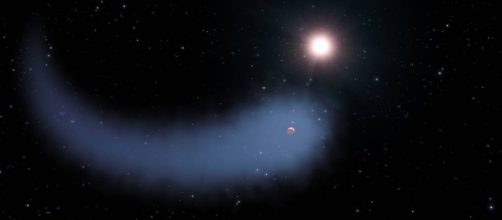NASA´s Hubble Space Telescope observed a system of two red dwarf stars and one planet orbiting around them. This system is around 8,000 light years away from earth and is located in the center of the Milky Way. The planet orbits approximately 482 million km (300 million miles) from the binary star system and completes an orbit around the stars in seven years.
System of a stars and one planet
This system of three astronomical bodies was detected by gravitational micro lensing, which encompass the use of two stellar bodies, including a background and a foreground star.
The light from a background star is bended and amplified by the gravity of a foreground star when these two bodies are aligned as seen from earth. Many types of information can be obtained by gravitational micro lensing, such as the nature of the foreground star and the accompanying planets.
Microlensing
The system was first observed back in 2007; however, at that time, the variety of micro lensing observations revealed only a star and one planet. Careful analyses revealed a third body, which scientists could not clearly identify then. Ground observations suggested a system consisting of a Saturn-like planet and a binary system of stars or a Saturn-like planet and an earth-like planet around a single star.
Hubble´s observations
Using Hubble’s high resolution imaging astronomers were able to set apart the individual members of the system in a much crowed star field. These observations revealed that although the light coming from star was somewhat faint to be coming from a single star, the most likely possible scenario was that the source was not coming from a single but from two red dwarf stars.
The almost perfect alignment of the background and foreground bodies plus the observations made with the aid of the Hubble´s Wide Field Planetary Camera 2 allowed for the careful study and detection of the system of stars and one planet. It´s expected that with the use of micro lensing and Hubble´s resolution capabilities scientists will be able to continue their search for exoplanets and their related host stars.

